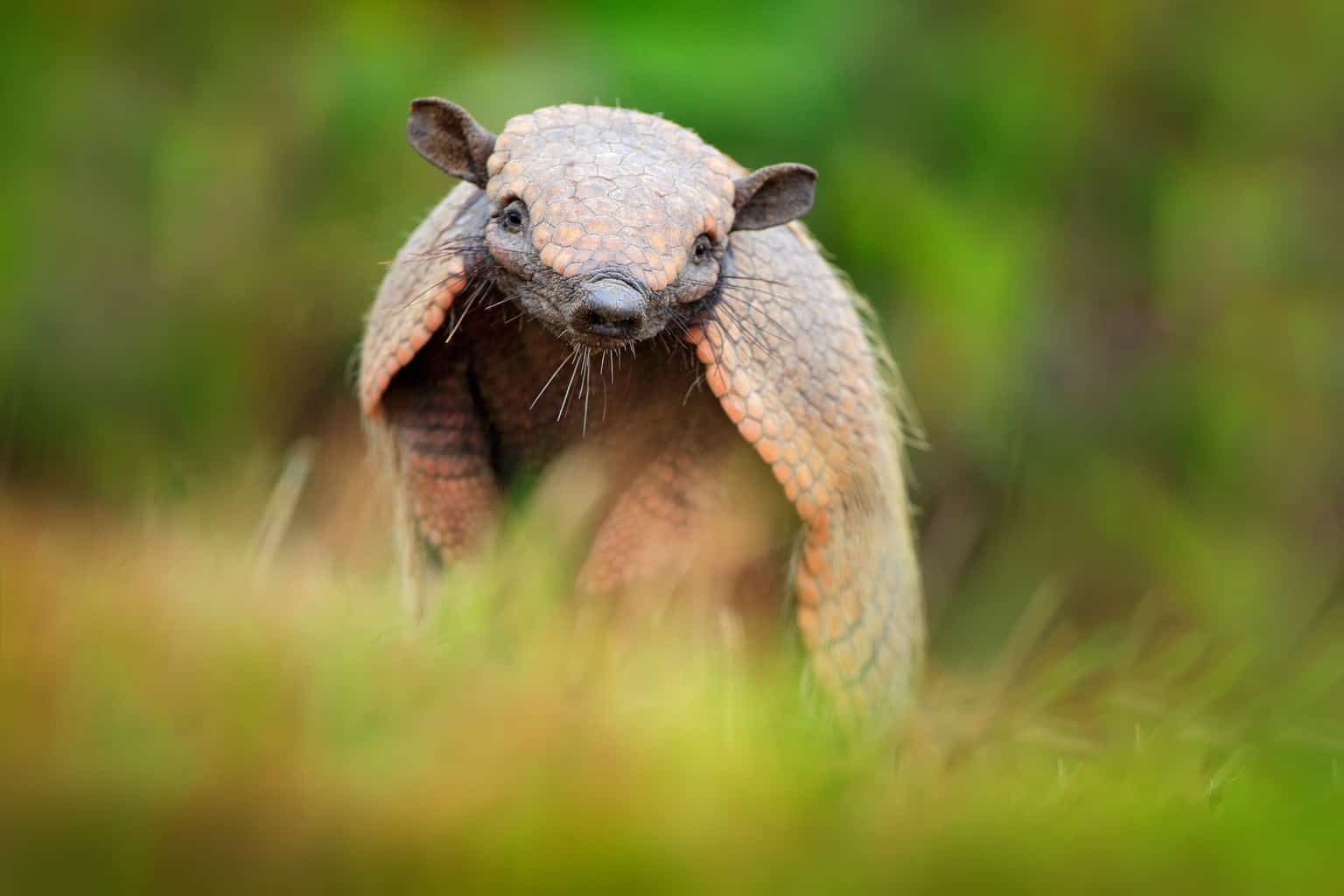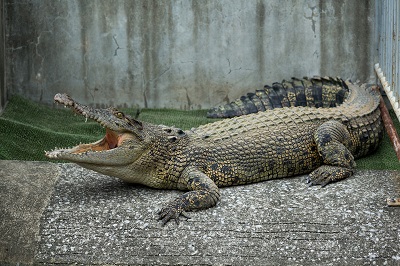BY KATHLEEN MILLAT JOHNSON
IMAGINE CAMPING IN THE Lowcountry and just as you are drifting off to sleep, you hear what sounds like Big Foot prowling around your tent. What you see, if you are brave enough to peek outside, is not Sasquatch but a football-sized creature shuffling around the ground making a big racket as it searches for food. It’s an armadillo!
This wild animal doesn’t even notice you since its ears, eyes and nose are totally dedicated to finding insects and grubs. You can go back to sleep; you are safe. This prehistoric looking mammal is not dangerous.
The Little Armored Ones
Armadillo is a Spanish word meaning “little armored one.” The armadillo has peg-like teeth, a long nose and sticky tongue like an anteater’s, a segmented, rat-like tapered tail, long sharp claws and hard but flexible plates of “armor” called scutes on its back. These scutes have given the armadillo the nickname of “possum on a half shell.”
The armadillo cannot run fast or fight. Natural predators like cougars, bobcats and alligators don’t let scutes of hardened keratin stop them from grabbing an armadillo for lunch. A hungry dog might also be tempted, as would a very hungry human. During the Great Depression they were eaten and called “the Poor Man’s Pork.”
A strange fact about armadillos is that they can transmit leprosy (Hanson’s disease) to humans. They can also carry rabies and salmonella, so think twice before trying to catch, touch or eat one.
Armadillos originated in South America, slowly made their way across the continent to Central America, then to the United States, finding their way to Texas. They were first spotted in South Carolina in 1995! Visit our website (www.carolinatails.org) to watch an armadillo swimming in the surf on Edisto Beach in
Dasypus Novemcinctus
There are twenty-one varieties… like the Big Hairy armadillo, covered with hair all over their body which works like feelers or antennae… or the tiny Pink Fairy armadillo which is only four inches long and can fit in the palm of your hand. It resembles a fat, short, centipede that is a delicate pink color. The Big Hairy and the Pink Fairy varieties are found only in South America. What we see in the United States is the Nine-banded armadillo, (Dasypus Novemcinctus).
Armadillos sleep 16 hours a day in their 15-foot burrows and become active at dusk. These placental mammals mate without fanfare (competing males may stomp around a little) and only a single egg in the female Nine-banded armadillo is fertilized. This one egg in the Nine-banded armadillo always splits and produces four identical offspring. Implantation of the fertilized egg can be delayed for four months as the female awaits a more favorable time for birthing her “pups.”
Why South Carolina?
In the Palmetto State, it seems armadillos have found the perfect weather and environment to thrive. You may find them in your garden eating insects and grubs while uprooting your plants along the way.
You are sure to see them on roads like Route 61, meandering across the pavement or, unfortunately, as road kill. Their poor eyesight and wobbly gait are no match for speeding cars. When startled, they can jump three feet into the air, into the undercarriage of a passing car.
If you are looking for one reason to celebrate the armadillo in the Lowcountry, keep in mind that these relatives of anteaters devour fire ant eggs. And for anyone who’s ever been bitten by a fire ant, that’s reason enough to smile the next time you see one of these odd, meandering creatures in your neighborhood.





